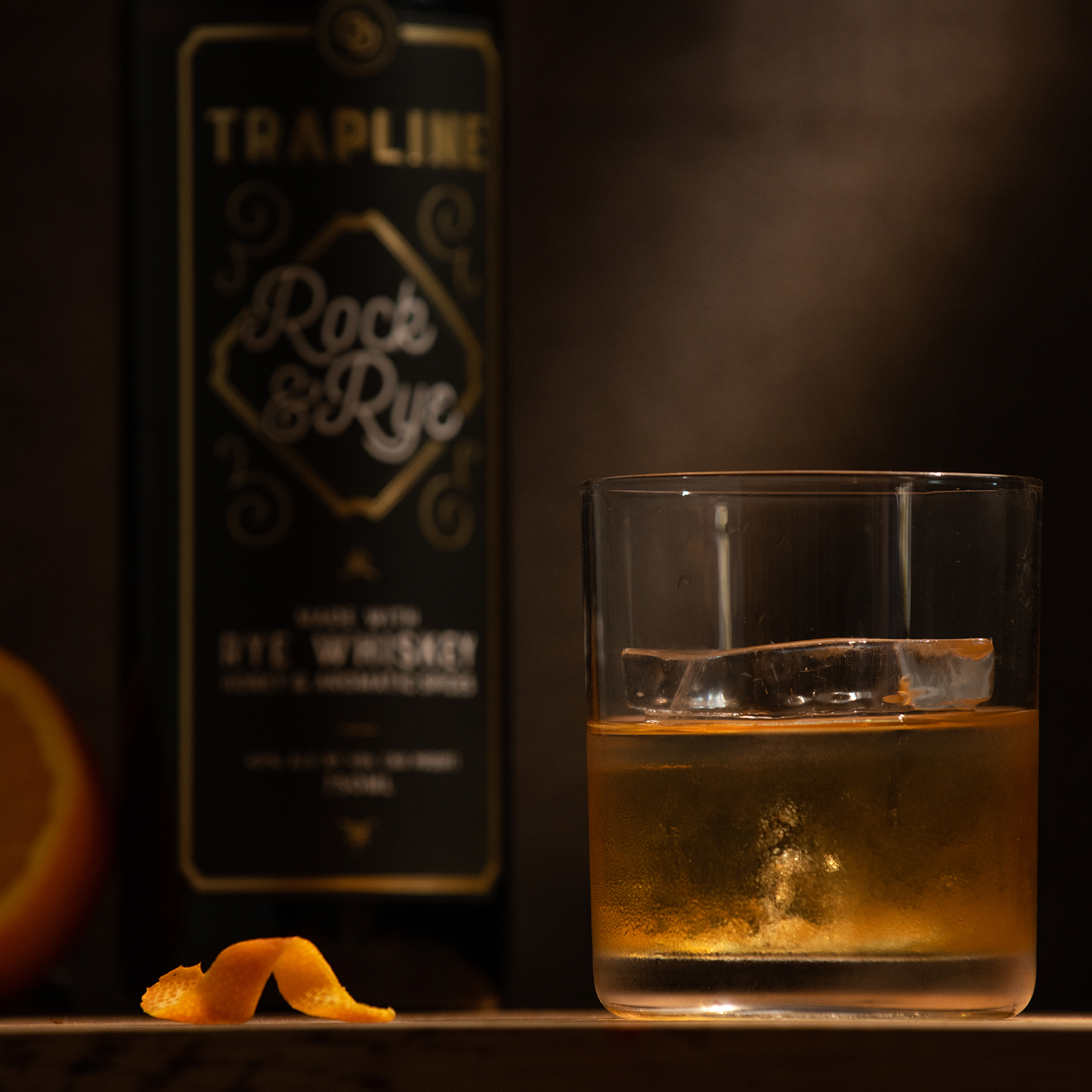The rock and rye is a pre-Prohibition cocktail first devised — or disguised — as medicine. By the late 1870s, most pharmacies across America had their own proprietary blends, often promoted as a cough syrup or prescribed for stomach issues. Some claimed it could also treat “women’s issues” or cancer. Tolu Rock and Rye, in Chicago, advertised its use for “coughs, colds, sore throat, chest and lungs.”
Whether taken straight or mixed with a hot tea, recipes were as simple as rye whiskey and crystalized sugar —rock candy — or more complex with the addition of citrus, balsam, horehound or bitters for palatability. Bitters, such as Angostura and Peychaud’s, have their own histories of tincture. They were also created first as a medicine before being inducted into the cocktail world.
The clever classification of rock and rye as a medicine made it easier for suppliers to avoid attention during the temperance movement and helped boost profits as it was taxed at a lower rate than liquor.
The similarities, however, between rock and rye as medicine and a ready-made, bottled cocktail are clear. The earliest mention of “cocktail” describes it as a “stimulating liquor, composed of spirits of any kind, sugar, water and bitters.” Add an ounce of sweet vermouth and a cherry for garnish, and you have a kind of Manhattan, for example. In 1883, therefore, the rock and rye was reclassified as a distilled spirit and has its own legal classification today.
Trapline Rock & Rye from Glacier Distilling Company — a mix of rye whiskey, local honey and in-house aromatic and orange bitters — is an excellent example of a turn-of-the-20th-century idea reimagined for a modern cocktail audience, winning Silver Medal at the 2019 San Francisco World Spirits Competition.
“It’s kind of meant to be a very sophisticated base,” said Nic Lee, founder and head distiller at Glacier Distilling Company in Coram. “Pour it over the rocks and you’re done. But if you want to add a little fresh orange and cherry, you have yourself an Old Fashioned.”
Kendra Burton developed the orange and aromatic bitters recipe used in-house and for the Trapline. For the first time, Burton’s aromatic bitters are for sale at the tasting room.
“For a simple go-to sipper that has that pop of sugar and has that pop of citrus and aromatic spices, it’s good on its own,” she said. “But it mixes so well.”
Thought and precision have gone into each bottle of Trapline.
“Overall, it is a warming and comforting flavor profile,” Lee said. “It’s got sweet honey; it’s got orange and vanilla notes. Then, with the rye, it has a very kind of earthen flavor to it that goes toward the savory end.”
As “to-go” cocktail demic, Trapline Rock & Rye is an excellent addition to the home bar as we head into the whiskey-weather months for its versatility and notes of classic winter spices.
“When people taste the Trapline, they say they think it tastes like the holidays or Christmas, where you get those pops of clove and cinnamon,” Burton said.
Plus, it’s a fun and unique tipple of pre-Prohibition history.
Where to find it: The Glacier Distilling Company tasting room, The Whiskey Barn, is located at 10237 Highway 2 East, Coram. It’s open for flight tastings and bottle purchases as current health and safety recommendations allow. More product locations are available at www.glacierdistilling.com.
Recipes
The Trapline is different as it can be appropriately described as a cocktail in a bottle – a ready mix of rye whiskey, honey and bitters.
A few options:
• Hot Toddy: Mix with hot water and a dash of lemon, bringing out those aromatic spices.
• Old Fashioned: Pour 2 oz. over ice; add two orange slices, two maraschino cherries and a dash of soda water. (Experiment by muddling the orange with a tiny bit of brown sugar.)
• Manhattan: Pour 2 oz. over ice, add 1 oz. sweet vermouth and garnish with a brandied cherry.
Pub Talk
The term trapline is derived from the fur trade business, denoting a route that trappers would use to hunt. To be effective, a trap would need to be checked regularly, independent of how pleasant or foul the weather, and a trapper’s knowledge of the geography and terrain of an area was paramount.
According to the bottle of Trapline Rock & Rye, the term was adopted in the late 1940s “by the loggers and dam builders in the ‘The Canyon’ for a different sort of traverse — running from Martin City through Coram and West Glacier to Essex and stopping at the more than 30 bars along the route. It wasn’t a task for the faint of heart.”
In this spirit, as we enter a long winter, Trapline is the “perfect fortification to keep the nip of cold mountain air at bay and the legs limber for traversing remote terrain on whatever your adventure may be.”
